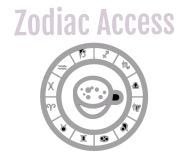Traits of the Ox
Ox is the second sign in the Chinese Zodiac. Like the animal they are named after, Ox people tend to be powerful and steady. Oxen were traditional used to plow fields, and haul heavy loads. They make good work animals because of their dependable and patient attitudes. Ox people are considered the same.
Oxen are hardworking and logical, but they need an peaceful and quiet environment to sift through ideas and feelings in their own mind.
Not only are Ox people dependable, but they crave dependability and routine. Considered mostly uncreative, Oxen prefer logic and reasoning to emotional appeals.
The Ox is the sign of prosperity through fortitude and hard work. This powerful sign is a born leader, being quite dependable and possessing an innate ability to achieve great things. As one might guess, such people are dependable, calm, and modest. Like their animal namesake, the Ox is unswervingly patient, tireless in their work, and capable of enduring any amount of hardship without complaint.
Ox people need peace and quiet to work through their ideas, and when they have set their mind on something it is hard for them to be convinced otherwise. An Ox person has a very logical mind and is extremely systematic in whatever they do, even without imagination. These people speak little but are extremely intelligent. When necessary, they are articulate and eloquent.
The Ox is not extravagant, and the thought of living off credit cards or being in debt makes them nervous. The possibility of taking a serious risk could cause the Ox sleepless nights.
Ox people are truthful and sincere, and the idea of wheeling and dealing in a competitive world is distasteful to them. They are rarely driven by the prospect of financial gain. These people are always welcome because of their honesty and patience. They have many friends, who appreciate the fact that the Ox people are wary of new trends, although every now and then they can be encouraged to try something new.
It is important to remember that the Ox people are sociable and relaxed when they feel secure, but occasionally a dark cloud looms over such people and they engage all the trials of the whole world and seek solutions for them.
The development of Chinese astrology dates back to at least the Zhou Dynasty ( 1122 BC – 256 BC). Some sources claim it began as far back as 2150 BC. The ancient Chinese astrologers began by using the position of planets, moon and stars to accurately predict the change of seasons, and flow of the tides. These predictions were vital to the success of farming at the time, as they were used to predict the best times to plant and harvest crops.
To help them keep track of passing time, the Ten Heavenly Stems and Twelve Earthly Branches were created. These important signs we used to mark the passing of what we know as hours, days, months, and years. During this time in history, only the elite could read and write, so animals were used to symbolize each of the Twelve Earthly Branches.
Legend has it that during the celebration of New Year Buddha was to decide upon the order of animals to be used for the Twelve Earthly branches. He asked all the animals in the kingdom to join him for a meeting. Only twelve animals answered the call of Buddha and attended the meeting.
Buddha granted each of those twelve animals sovereignty over an Earthly Branch. Each animal was to lead the Branch and have influence over those born during its Branch.
We know the Twelve Earthly Branches as “Years”. In the traditional Chinese calendar, these twelve animal signs repeat themselves in a never-ending circle, to remind us that time is a constant and has flow.
The Twelve Earthly Branches are, in order, the mouse, ox, tiger, rabbit, dragon, snake, horse, sheep, monkey, rooster, dog, and pig.
Some ancient Chinese valued the Earth over the stars. These scientists looked for the reasons behind the natural order of things. They agreed that all things had a basis in one of Five elements. To their understanding, all things were made from Fire, Earth, Metal, Water, or Wood.
They examined how these basic elements worked together and against each other. Wood creates Fire, Fire turns to Earth, Earth creates Metal, Metal creates water, and water creates Wood.


